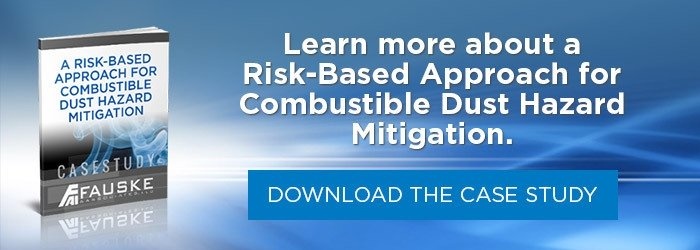You've been tasked with overseeing potential dust hazards at your plant and/or you need to be ready for Authorities Having Jurisdiction (AHJs) and/or you have the unusual task of CONVINCING your leadership team or purchasing department that dust hazards testing is not only necessary, but vital to facility safety as well as their bottom line.
 What if you could provide a thoughtful way to tackle this task while beginning small (financially) and evaluating larger scale needs, if necessary?
What if you could provide a thoughtful way to tackle this task while beginning small (financially) and evaluating larger scale needs, if necessary?
Here's a new, innovative approach to getting your dusty ducks in a row. Utilize an independent engineering and testing lab to facilitate:
- Training /teaching/ facilitating your team to perform DHA’s
- A turnkey approach with corrective actions detailed to close gaps identified by team consensus
- A core team to develop and complete a Dust Hazard Analysis (DHA) with corrective actions with the help of a trained facilitator
- Working as a team to assess your Combustible Dust processes using a "What if/Checklist" approach
- Completing documentation provided at end of visit for insurance or regulatory audits assembled in an organized structure
- This training and process, which is cost and time effective and scalable to any size company
- Processes which align directly with NFPA standards - providing clear references to NFPA standards
 Benefits
Benefits
Turnkey process with management closeout and a deliverable document at the end of the visit:
- Involves the plant staff (ownership of process by the plant)
- Educates/trains staff of facility in the basics of dust hazards, how risk assessment tools are used and what to look for
- Provides practical approach to identifying dust hazards
- Raises the awareness level of dust hazards
- Puts easy to use tools in hands of your staff to further assess additional areas of combustible dust risks at your facility
- Provides actionable corrective actions with assigned responsibilities and target dates
- Team agrees upon corrective action items
- Completes a full DHA, organized with supporting documentation at the end of the visit
- Provides more personnel buy-in and is both timely and cost effective over traditional DHA processes
- Prevents lengthy delays receiving and reading through reports
- Provides easy to read report outlining process, gaps, and corrective actions
- Yields actionable corrective items required to be NFPA compliant
Remind your leadership that per NFPA 652, the owner/operator of the facility is responsible for:
- Characterizing combustible materials
- Identifying hazards and risks of combustible dust
- Mitigating those hazards
- Communicating hazards to the workforce
 Any modifications to an existing process with costs that exceed 25% of the original installation costs requires a DHA. All existing facilities handling combustible dust must have a DHA completed (Deadline is September 2020).
Any modifications to an existing process with costs that exceed 25% of the original installation costs requires a DHA. All existing facilities handling combustible dust must have a DHA completed (Deadline is September 2020).
Remember, too, that simple Go/No-Go tests are inexpensive and a way to get the ball rolling. The sooner your DHA program becomes part of your company's DNA, the more prepared you will be to meet regulations with the added benefit of education and inclusion.
Fauske & Associates, recently developed a case study on a combustible dust explosion at a processing plant. We break down our approach to risk based inspection that was implemented to mitigate future hazards. Download the case study by clicking below.
regulatory audits.

